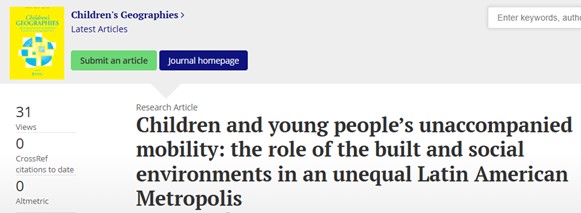Natan Waintrub, Peter Jones &Nick Tyler
ABSTRACT
Unaccompanied trips are highly beneficial for children, yet their practice is difficult in unequal Latin American metropoles. This article investigates how the built and social environments influence children and young people’s trips in Santiago de Chile. It does so by reporting the findings of a stated preference questionnaire in which children and young people were invited to choose the preferred environment to walk unaccompanied in between pairs of images illustrating different social and physical attributes. The findings suggest that Santiago’s inequalities are mirrored in the environments through which children and young people prefer to walk unaccompanied. Attributes that enhance the streetscape (e.g., well-kept footpaths, grass), provide recreation and natural surveillance positively affect children’s willingness to make unaccompanied trips in wealthy areas. By contrast, those attributes are less significant for children and young people from other parts of the city, where other features have a greater impact (e.g., strangers drinking alcohol, off-licences, vehicles parked on the footpath). Furthermore, young girls are greatly discouraged from travelling unaccompanied in most circumstances, in both wealthy and not-wealthy areas. Public policies should prioritise non-wealthy neighbourhoods, improve the built environment, and strengthen local communities and local familiarity to create safer spaces that encourage unaccompanied trips.
